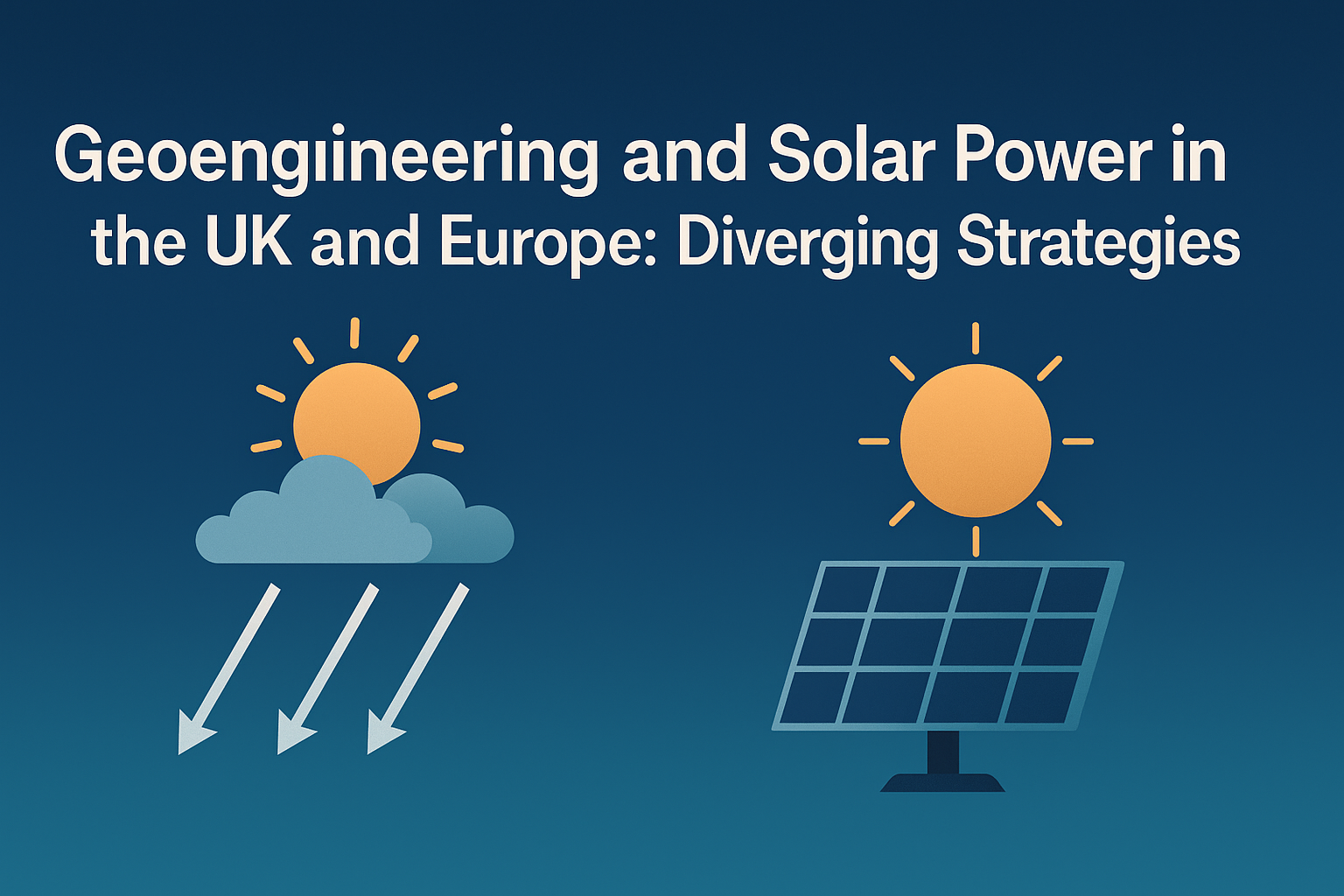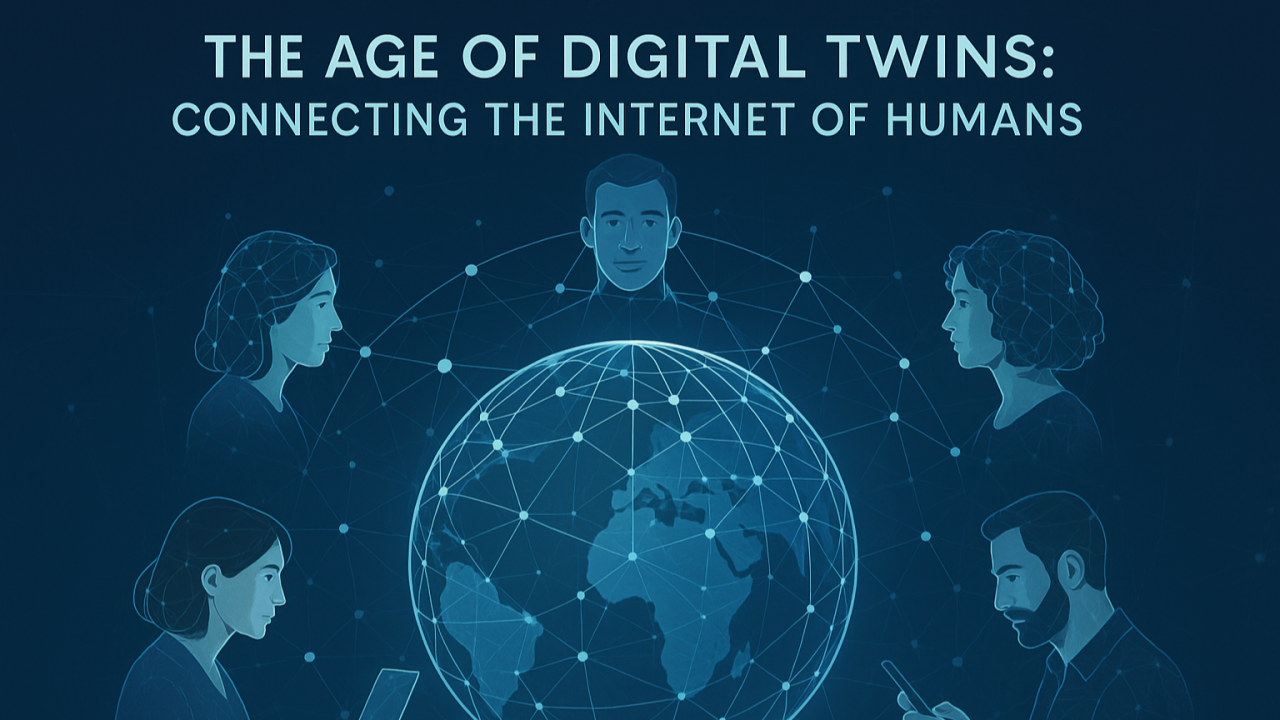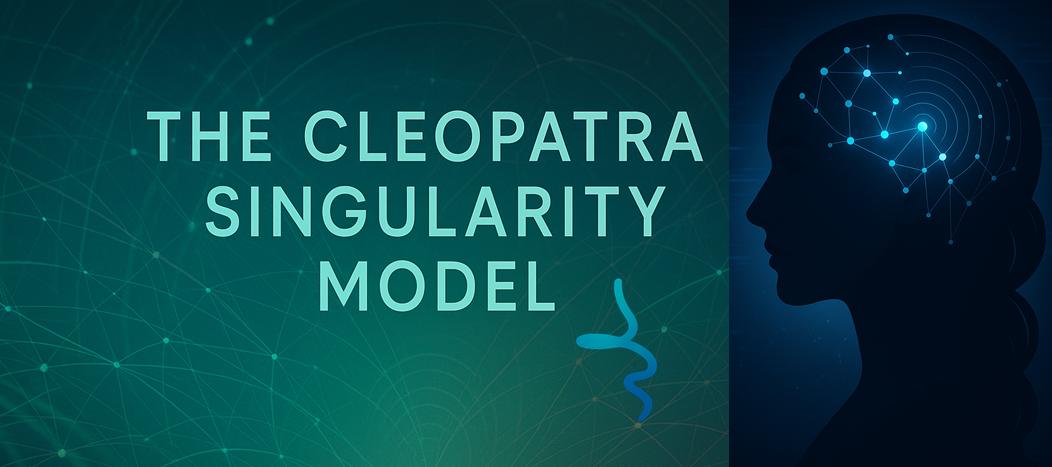

Introduction: A Climate Crossroads In 2025, the UK’s Advanced Research and Invention Agency (ARIA) allocated £56.8 million toward funding 21 geoengineering research projects. These initiatives include strategies such as Stratospheric Aerosol Injection (SAI), Marine Cloud Brightening, and Cirrus Cloud Thinning—techniques designed to reduce solar radiation reaching Earth in response to rising temperatures and the threat of climate tipping points.
At the same time, continental Europe continues to emerge as a leader in solar energy deployment. The EU installed over 56 GW of new solar capacity in 2023 alone, according to SolarPower Europe, with projections of reaching 600 GW by 2030. Solar energy is the fastest-growing electricity source in the EU, now constituting a central pillar of the European Green Deal.
This parallel development—of harnessing the sun versus dimming it—raises urgent questions. Can the two strategies coexist? Or are we witnessing a policy paradox at the heart of climate planning?
1. Understanding Geoengineering: The Emergency Toolkit Geoengineering refers to large-scale interventions in Earth’s climate system aimed at mitigating the effects of global warming. Techniques like SAI involve injecting sulfate aerosols into the stratosphere to reflect sunlight, mimicking natural phenomena like volcanic eruptions. Marine Cloud Brightening enhances low-altitude cloud reflectivity using seawater droplets, while Cirrus Cloud Thinning aims to allow more thermal radiation to escape from Earth.
These projects are in the modeling and research phase, with no large-scale outdoor experiments yet conducted. The UK government positions them as contingency plans for worst-case climate scenarios. However, many scientists stress that such measures are not substitutes for emission reductions.
2. Europe’s Solar Ambitions: Scaling the Real Solution While the UK investigates artificial solar reduction, the EU is turning toward natural solar capture. Solar photovoltaic (PV) power has become the cheapest electricity in history, according to the International Energy Agency (IEA). Germany leads Europe in solar output, followed by Spain, the Netherlands, and France, with multi-billion euro investments supporting domestic and commercial installations.
These investments offer not only carbon-free energy, but energy sovereignty, job creation, and stable long-term returns. Policies such as the EU Solar Strategy and REPowerEU initiative further cement solar energy’s role in Europe’s post-carbon transformation.
3. Potential Economic and Technological Conflicts The economic rationale for solar PV is straightforward: more sunlight equals more power. However, if geoengineering were deployed at scale—reducing solar radiation—it could directly diminish solar generation efficiency.
This presents a tangible conflict. According to recent modeling from the National Renewable Energy Laboratory (NREL), a global SAI deployment reducing solar irradiance by 1.8% could lower PV output by 2–3%. Over a decade, this could translate to hundreds of billions of euros in lost electricity value.
For businesses investing in solar, this creates uncertainty: how can a government subsidize solar development while simultaneously funding technology that may undermine its performance?
4. Environmental and Ethical Uncertainties Geoengineering is not without risks. Major scientific institutions, including the Royal Society and the U.S. National Academies of Sciences, have emphasized the uncertainty surrounding unintended side effects.
Potential consequences include:
Moreover, governance challenges remain unresolved. Who controls the deployment switch? Who bears liability for regional climate anomalies? These are not hypothetical concerns—they are barriers to equitable implementation.
5. Strategic Misalignment and Global Narratives The broader contradiction is clear: while the EU positions the sun as an ally in climate recovery, geoengineering frames it as a problem to manage. If both approaches are pursued simultaneously without coherence, the result could be public confusion, investment hesitancy, and long-term climate policy fragmentation.
Additionally, geopolitical tensions could rise. Countries in the Global South—already disproportionately impacted by climate change—may see solar dimming as an unjust intervention affecting their crops, rainfall, and economies.
Conclusion: Reconciliation or Divergence? Geoengineering research should not be dismissed out of hand. It may play a role in emergency climate stabilization. But as a policy direction, it must not compete with proven, scalable solutions like solar energy.
The UK’s investment in sunlight-reflecting technologies must be paired with transparency, ethical review, and global coordination. Otherwise, we risk turning a planetary lifeline—the sun—into a controllable variable with vast unintended consequences.
As Europe’s renewable ambitions gain momentum, coherence matters more than ever. In climate strategy, paradox is not progress.
Call to Action For policymakers, investors, and researchers: demand strategic alignment. Invest in technologies that harness natural abundance, not ones that gamble with planetary systems. The sun is not the enemy—it is the solution. Let’s treat it as such.
Seems misaligned?
Shocking?
Requires Discussions?
Great?
Lorem Ipsum is simply dummy text of the printing and typesetting industry

